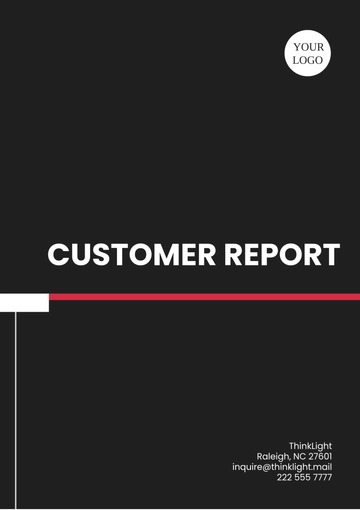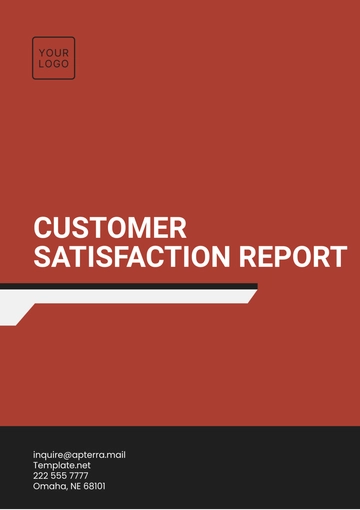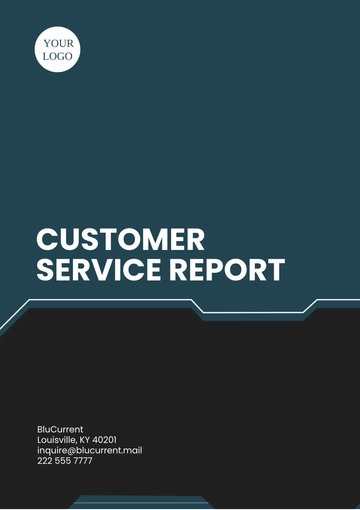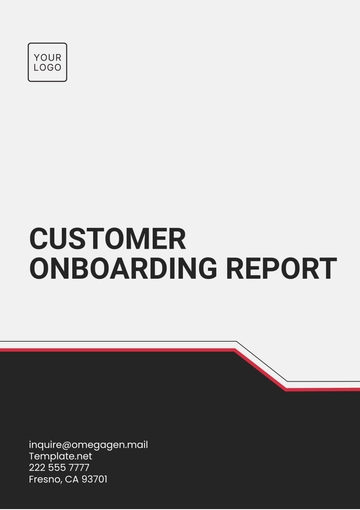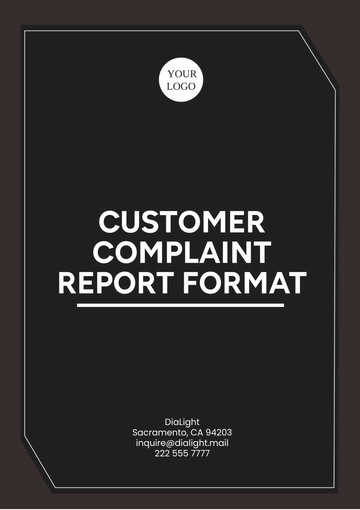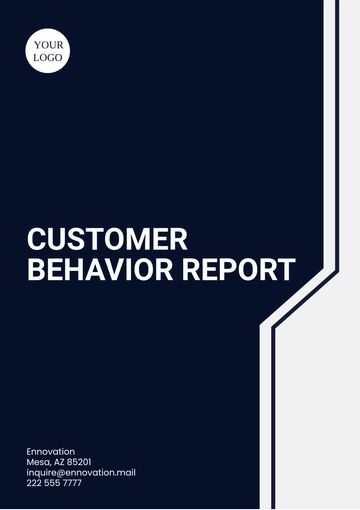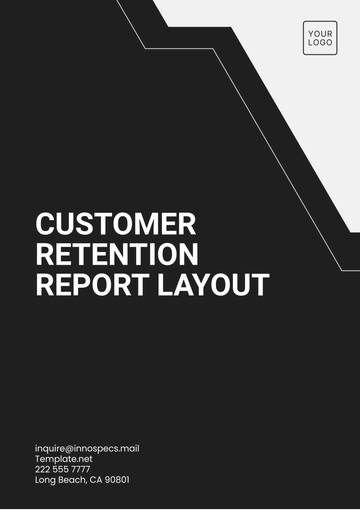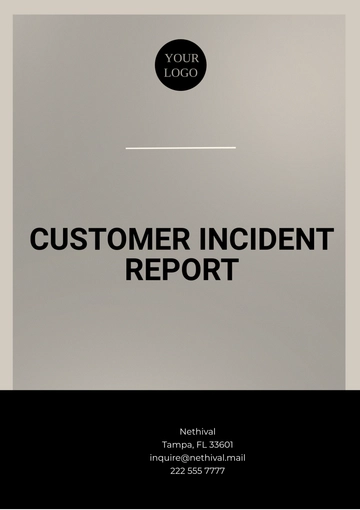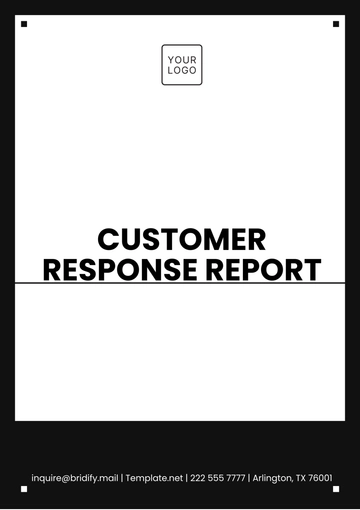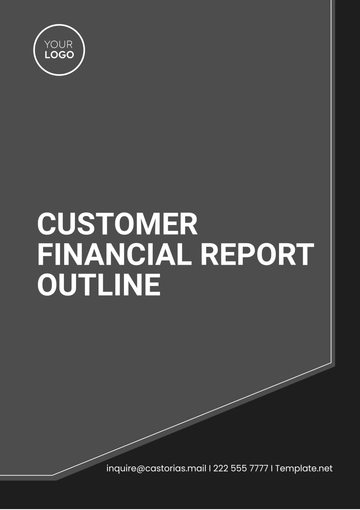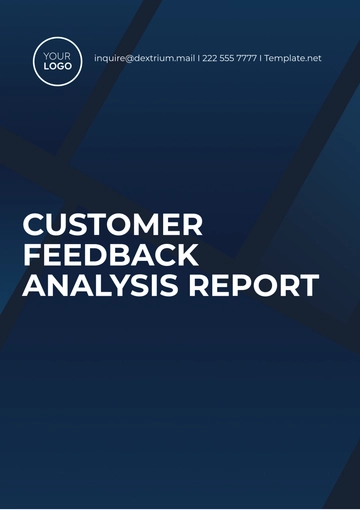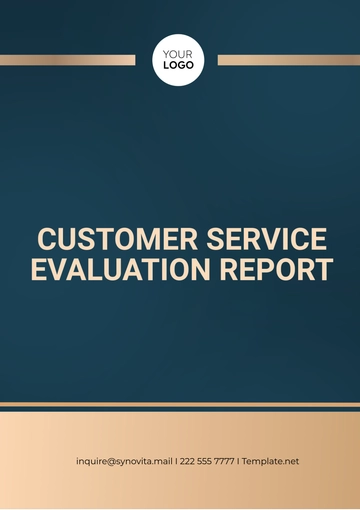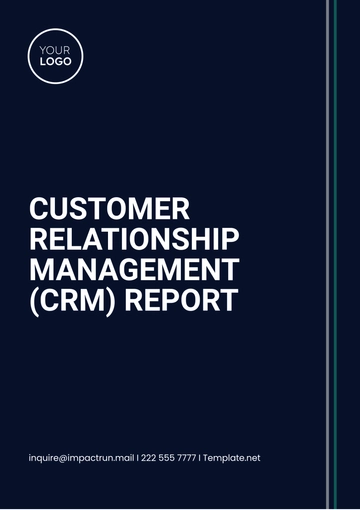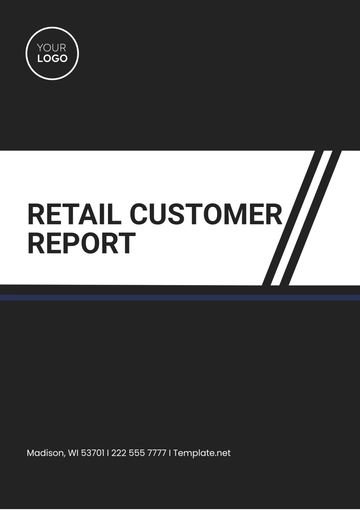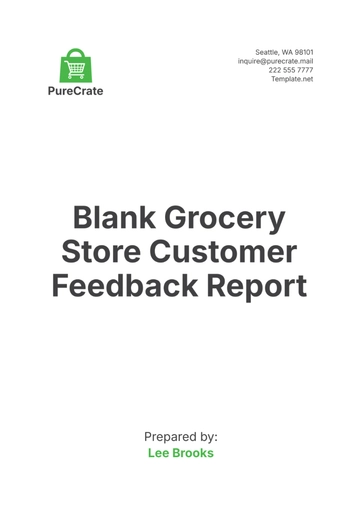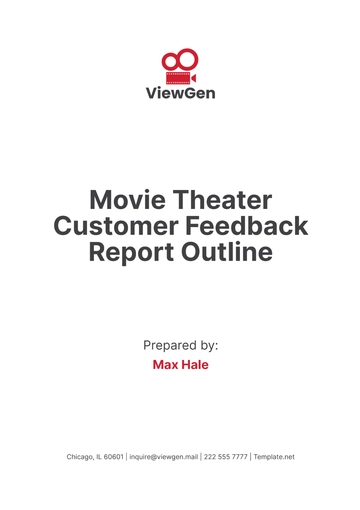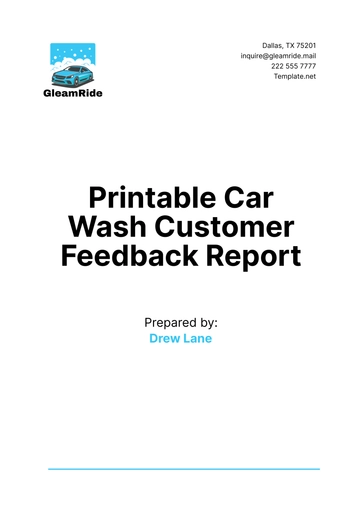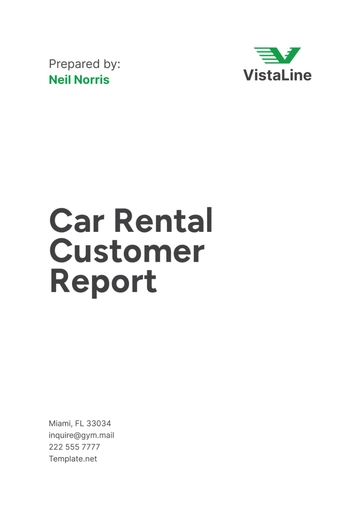Free Car Rental Customer Report

Introduction
This comprehensive Car Rental Customer Report is designed to provide an extensive analysis of customer interactions, preferences, satisfaction, and areas of improvement for [Your Company Name]. The report encompasses data from various sources, customer feedback, and detailed analysis to help improve the overall customer experience.
1. Executive Summary
This report presents an in-depth analysis of the customer base for [Your Company Name] in 2050. The objective is to gain a comprehensive understanding of our customers' profiles, behaviors, and preferences to better tailor our services and improve overall satisfaction and retention.
Demographic Details
Our customer demographics reveal significant insights into who is using our services. The analysis covers age groups, gender distribution, and geographic locations. Understanding these demographics helps us to identify our primary customer segments and adapt our marketing and service strategies accordingly.
Age Groups: Our data indicates that the majority of our customers fall within the 25-34 age range, making up 35% of our customer base. This is followed by the 35-44 age group at 25%. Younger customers (18-24) account for 15%, while those aged 45-54 and 55+ represent 15% and 10% respectively.
Gender Distribution: There is a slight male predominance in our customer base, with 55% male and 45% female customers.
Geographic Locations: Urban customers dominate at 70%, followed by suburban (20%) and rural (10%) areas. This geographic distribution highlights the importance of maintaining strong urban operations while also considering growth opportunities in suburban and rural markets.
Rental Preferences
Understanding rental preferences is crucial for optimizing our fleet and service offerings. Our analysis covers the types of vehicles preferred, typical rental durations, and booking methods.
Vehicle Types: Economy and mid-size vehicles are the most popular, comprising 30% and 25% of rentals respectively. Compact cars account for 20%, while full-size vehicles and SUVs each make up 10%. Luxury vehicles, though least rented, still represent a significant niche at 5%.
Rental Duration: Most customers prefer short-term rentals, with 1-3 day rentals being the most common (40%). Rentals of 4-7 days follow at 35%, while longer rentals (8-14 days and 15+ days) make up 15% and 10% respectively.
Booking Methods: The majority of our customers (60%) book rentals through our website or mobile app, demonstrating the importance of maintaining a user-friendly online presence. Phone bookings account for 25%, and in-person bookings make up 15%.
Customer Satisfaction Analysis
Customer satisfaction is a critical measure of our performance. This section assesses overall satisfaction levels and satisfaction with specific service aspects.
Overall Satisfaction: High levels of satisfaction are reported, with 50% of customers being very satisfied and 30% satisfied. However, 10% of customers are neutral, and a combined 10% are dissatisfied or very dissatisfied, indicating areas for improvement.
Service Aspects: Vehicle condition, customer service, rental process, pricing, and return process are evaluated. The highest satisfaction is with vehicle condition (85% satisfaction) and customer service (85%). Pricing and rental process satisfaction are lower, highlighting opportunities for improvement.
Feedback and Complaints
Analyzing feedback and complaints helps identify areas needing improvement and potential growth opportunities.
Common Feedback Themes: Positive feedback often highlights excellent customer service and an easy booking process. However, customers have expressed a desire for a wider variety of vehicles and more rental locations.
Common Complaints: High pricing and vehicle availability are the most common complaints. Issues with the return process and vehicle cleanliness are also noted but less frequent.
Customer Loyalty and Retention
Customer loyalty programs and retention rates are crucial for sustaining long-term business success.
Loyalty Program Participation: Half of our customers participate in our loyalty program at the basic tier, while silver, gold, and platinum tiers account for 30%, 15%, and 5% respectively.
Retention Rates: Retention rates decrease over time, with a 90% retention rate after one month, dropping to 50% after two years. This trend underscores the need for ongoing engagement and value delivery to retain customers.
Recommendations
Based on the analysis, we provide several strategic recommendations to enhance the customer experience and increase retention:
Enhance Vehicle Availability: Expand and diversify our fleet to meet the varied preferences of our customers.
Improve Pricing Strategies: Review and adjust pricing models to make rentals more competitive and appealing.
Streamline Return Process: Implement measures to expedite the vehicle return process, improving efficiency and customer satisfaction.
Expand Locations: Consider opening more rental locations, especially in suburban and rural areas, to increase accessibility.
Enhance Customer Service: Invest in comprehensive training programs for customer service representatives to reduce wait times and improve service quality.
This executive summary provides an overview of the detailed findings and strategic insights presented in this report. By implementing the recommended actions, [Your Company Name] can significantly enhance the customer experience, leading to higher satisfaction and retention rates, and ultimately driving business growth in the competitive car rental industry.
2. Customer Demographics
Understanding the demographics of our customer base is crucial for tailoring our services to meet their needs. The data presented below is a snapshot of our customers in 2050.
2.1 Age Distribution
This table shows the distribution of customers by age group.
Age Group | Percentage of Customers |
|---|---|
18-24 | 15% |
25-34 | 35% |
35-44 | 25% |
45-54 | 15% |
55+ | 10% |
2.2 Gender Distribution
This table displays the gender distribution of our customers.
Gender | Percentage of Customers |
|---|---|
Male | 55% |
Female | 45% |
2.3 Geographic Distribution
This table illustrates where our customers are primarily located.
Geographic Location | Percentage of Customers |
|---|---|
Urban | 70% |
Suburban | 20% |
Rural | 10% |
3. Rental Preferences
Rental preferences give insights into what our customers look for when renting vehicles. This includes preferred vehicle types, rental duration, and booking methods.
3.1 Preferred Vehicle Types
This table highlights the types of vehicles most frequently rented by our customers.
Vehicle Type | Percentage of Rentals |
|---|---|
Economy | 30% |
Compact | 20% |
Mid-size | 25% |
Full-size | 10% |
SUV | 10% |
Luxury | 5% |
3.2 Rental Duration
This table shows the typical rental duration preferred by customers.
Rental Duration | Percentage of Rentals |
|---|---|
1-3 days | 40% |
4-7 days | 35% |
8-14 days | 15% |
15+ days | 10% |
3.3 Booking Methods
This table displays the methods used by customers to book rentals.
Booking Method | Percentage of Bookings |
|---|---|
Online (Website/App) | 60% |
Phone | 25% |
In-person | 15% |
4. Customer Satisfaction Analysis
Customer satisfaction is vital for retention and loyalty. This section analyzes satisfaction levels based on various aspects of the rental experience.
4.1 Overall Satisfaction
This table shows the overall satisfaction ratings from customer feedback.
Satisfaction Level | Percentage of Customers |
|---|---|
Very Satisfied | 50% |
Satisfied | 30% |
Neutral | 10% |
Dissatisfied | 5% |
Very Dissatisfied | 5% |
4.2 Satisfaction by Service Aspect
This table breaks down satisfaction ratings by different service aspects.
Service Aspect | Very Satisfied | Satisfied | Neutral | Dissatisfied | Very Dissatisfied |
|---|---|---|---|---|---|
Vehicle Condition | 55% | 30% | 10% | 3% | 2% |
Customer Service | 50% | 35% | 10% | 3% | 2% |
Rental Process | 45% | 35% | 15% | 3% | 2% |
Pricing | 40% | 30% | 20% | 5% | 5% |
Return Process | 50% | 30% | 15% | 3% | 2% |
5. Feedback and Complaints
Analyzing customer feedback and complaints helps identify areas needing improvement. This section summarizes the common feedback and complaints received.
5.1 Common Feedback Themes
This table outlines the most frequent themes from customer feedback.
Feedback Theme | Frequency |
|---|---|
Excellent Customer Service | High |
Easy Booking Process | High |
Vehicle Variety | Medium |
Pricing Satisfaction | Medium |
Need for More Locations | Low |
5.2 Common Complaints
This table lists the most common complaints from customers.
Complaint Theme | Frequency |
|---|---|
High Pricing | High |
Vehicle Availability | Medium |
Lengthy Return Process | Medium |
Cleanliness of Vehicles | Low |
Customer Service Wait Times | Low |
6. Customer Loyalty and Retention
Customer loyalty and retention are key indicators of business success. This section analyzes the loyalty programs, retention rates, and factors influencing them.
6.1 Loyalty Program Participation
This table shows the participation rate in the company's loyalty program.
Loyalty Program Tier | Percentage of Customers |
|---|---|
Basic | 50% |
Silver | 30% |
Gold | 15% |
Platinum | 5% |
6.2 Retention Rates
This table displays the customer retention rates over the past year.
Time Period | Retention Rate |
|---|---|
1 Month | 90% |
6 Months | 75% |
1 Year | 60% |
2 Years | 50% |
7. Recommendations
Based on the comprehensive analysis conducted, several recommendations have been identified to improve customer satisfaction, enhance retention rates, and ultimately boost overall business performance. Implementing these recommendations will ensure that [Your Company Name] remains competitive and continues to meet and exceed customer expectations in the dynamic car rental industry.
7.1 Enhance Vehicle Availability
One of the primary findings from the analysis is the need to enhance vehicle availability. Customers have diverse preferences when it comes to vehicle types, and our current fleet, while varied, does not fully meet these needs. By increasing the variety and availability of vehicles, we can cater to a broader range of customer preferences, thereby improving satisfaction and encouraging repeat business.
To achieve this, we should consider expanding our fleet to include more economy, compact, and mid-size vehicles, as these are the most frequently rented types. Additionally, we should increase the number of SUVs and luxury vehicles to cater to niche markets that prefer these options. Regularly updating the fleet with the latest models will also ensure that our offerings remain attractive and competitive.
Moreover, ensuring that vehicles are readily available during peak seasons and in high-demand locations is crucial. This can be managed through better inventory forecasting and distribution strategies, ensuring that the right types of vehicles are available where and when they are needed the most.
7.2 Improve Pricing Strategies
Pricing plays a significant role in customer satisfaction and decision-making. Our analysis indicates that high pricing is one of the common complaints among our customers. Therefore, reviewing and adjusting our pricing strategies is essential to make our rentals more competitive and affordable.
A tiered pricing model can be introduced to cater to different customer segments. For instance, offering budget-friendly options for economy and compact vehicles can attract price-sensitive customers. At the same time, premium pricing for luxury and specialty vehicles can be maintained for customers willing to pay more for exclusive experiences.
Implementing dynamic pricing strategies can also be beneficial. This involves adjusting prices based on demand, availability, and other market conditions. For example, offering discounts during off-peak seasons or to customers booking in advance can incentivize more rentals and improve utilization rates.
Additionally, transparent pricing with no hidden fees is crucial. Customers appreciate honesty and clarity, and providing a detailed breakdown of costs upfront can enhance trust and satisfaction.
7.3 Streamline Return Process
The vehicle return process is a critical touchpoint in the rental experience. Our findings suggest that a lengthy and cumbersome return process is a significant pain point for customers. Implementing measures to speed up and simplify this process will greatly enhance customer satisfaction.
One approach is to introduce more automated and self-service options for returns. For instance, self-service kiosks and mobile app functionalities that allow customers to check in their vehicles, report mileage, and note any issues can significantly reduce wait times and improve efficiency.
Additionally, increasing the number of staff during peak return hours can help manage the flow and reduce delays. Providing clear signage and instructions at return locations can also help guide customers through the process smoothly.
Another consideration is offering flexible return options, such as allowing returns at different locations or outside of business hours. This added convenience can be a significant advantage for customers with varying schedules and needs.
7.4 Expand Locations
Convenience and accessibility are paramount in the car rental business. Our analysis indicates a strong presence in urban areas but suggests potential growth opportunities in suburban and rural markets. By expanding our rental locations, we can increase our reach and attract more customers.
Opening new locations in strategic areas, such as near airports, train stations, and popular tourist destinations, can enhance visibility and accessibility. Additionally, partnering with hotels, resorts, and other businesses to offer rental services on-site can provide added convenience for travelers and tourists.
It's also essential to consider the potential of expanding into suburban and rural areas. As more people move away from city centers, having rental locations in these regions can meet the growing demand for local transportation options.
Furthermore, leveraging technology to offer virtual rental locations or delivery services can be an innovative way to expand our reach. Customers can book their vehicles online and have them delivered to their doorstep, enhancing convenience and satisfaction.
7.5 Enhance Customer Service
Customer service is a cornerstone of the rental experience. Our analysis highlights the need to invest in training programs for customer service representatives to reduce wait times and improve service quality.
Comprehensive training programs should focus on equipping staff with the necessary skills to handle a wide range of customer interactions efficiently and professionally. This includes training on the rental process, handling complaints, and using technology effectively to assist customers.
Implementing a customer service feedback loop can also be valuable. By regularly gathering feedback from customers about their service experience, we can identify areas for improvement and make necessary adjustments. This proactive approach can help address issues before they escalate and enhance overall satisfaction.
Furthermore, recognizing and rewarding excellent customer service can motivate staff and reinforce a customer-centric culture. Providing incentives for staff who consistently receive positive feedback or go above and beyond in their roles can encourage high performance and dedication.
Additionally, leveraging technology to enhance customer service can be a game-changer. Implementing live chat support on our website and mobile app, offering virtual assistance through AI chatbots, and using CRM systems to track and manage customer interactions can streamline service delivery and improve responsiveness.
8. Conclusion
This report has provided a comprehensive analysis of the customer base, preferences, satisfaction levels, and areas for improvement for [Your Company Name]. By implementing the recommendations, the company can enhance the customer experience, increase satisfaction and retention, and ultimately drive business growth.
- 100% Customizable, free editor
- Access 1 Million+ Templates, photo’s & graphics
- Download or share as a template
- Click and replace photos, graphics, text, backgrounds
- Resize, crop, AI write & more
- Access advanced editor
Enhance your customer insights with the Car Rental Customer Report Template from Template.net. This template is specifically designed to compile detailed reports on customer behavior, preferences, and feedback. Fully editable and customizable with our AI editor tool, it helps you tailor your analysis to drive improvements and strategic decisions in your car rental business.
You may also like
- Sales Report
- Daily Report
- Project Report
- Business Report
- Weekly Report
- Incident Report
- Annual Report
- Report Layout
- Report Design
- Progress Report
- Marketing Report
- Company Report
- Monthly Report
- Audit Report
- Status Report
- School Report
- Reports Hr
- Management Report
- Project Status Report
- Handover Report
- Health And Safety Report
- Restaurant Report
- Construction Report
- Research Report
- Evaluation Report
- Investigation Report
- Employee Report
- Advertising Report
- Weekly Status Report
- Project Management Report
- Finance Report
- Service Report
- Technical Report
- Meeting Report
- Quarterly Report
- Inspection Report
- Medical Report
- Test Report
- Summary Report
- Inventory Report
- Valuation Report
- Operations Report
- Payroll Report
- Training Report
- Job Report
- Case Report
- Performance Report
- Board Report
- Internal Audit Report
- Student Report
- Monthly Management Report
- Small Business Report
- Accident Report
- Call Center Report
- Activity Report
- IT and Software Report
- Internship Report
- Visit Report
- Product Report
- Book Report
- Property Report
- Recruitment Report
- University Report
- Event Report
- SEO Report
- Conference Report
- Narrative Report
- Nursing Home Report
- Preschool Report
- Call Report
- Customer Report
- Employee Incident Report
- Accomplishment Report
- Social Media Report
- Work From Home Report
- Security Report
- Damage Report
- Quality Report
- Internal Report
- Nurse Report
- Real Estate Report
- Hotel Report
- Equipment Report
- Credit Report
- Field Report
- Non Profit Report
- Maintenance Report
- News Report
- Survey Report
- Executive Report
- Law Firm Report
- Advertising Agency Report
- Interior Design Report
- Travel Agency Report
- Stock Report
- Salon Report
- Bug Report
- Workplace Report
- Action Report
- Investor Report
- Cleaning Services Report
- Consulting Report
- Freelancer Report
- Site Visit Report
- Trip Report
- Classroom Observation Report
- Vehicle Report
- Final Report
- Software Report
